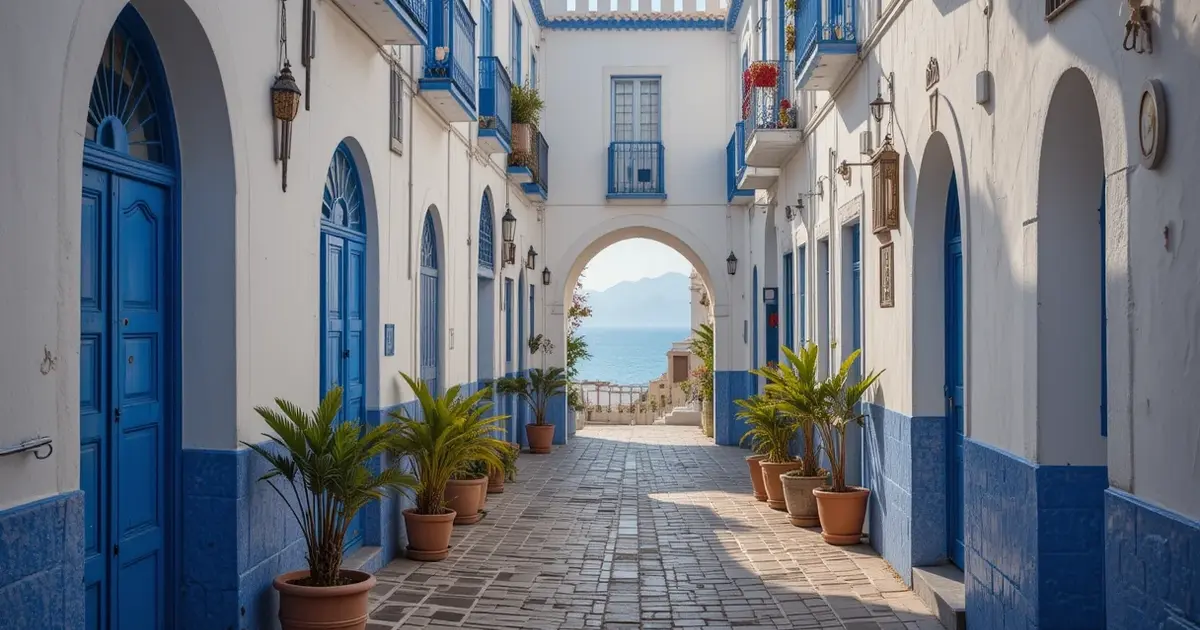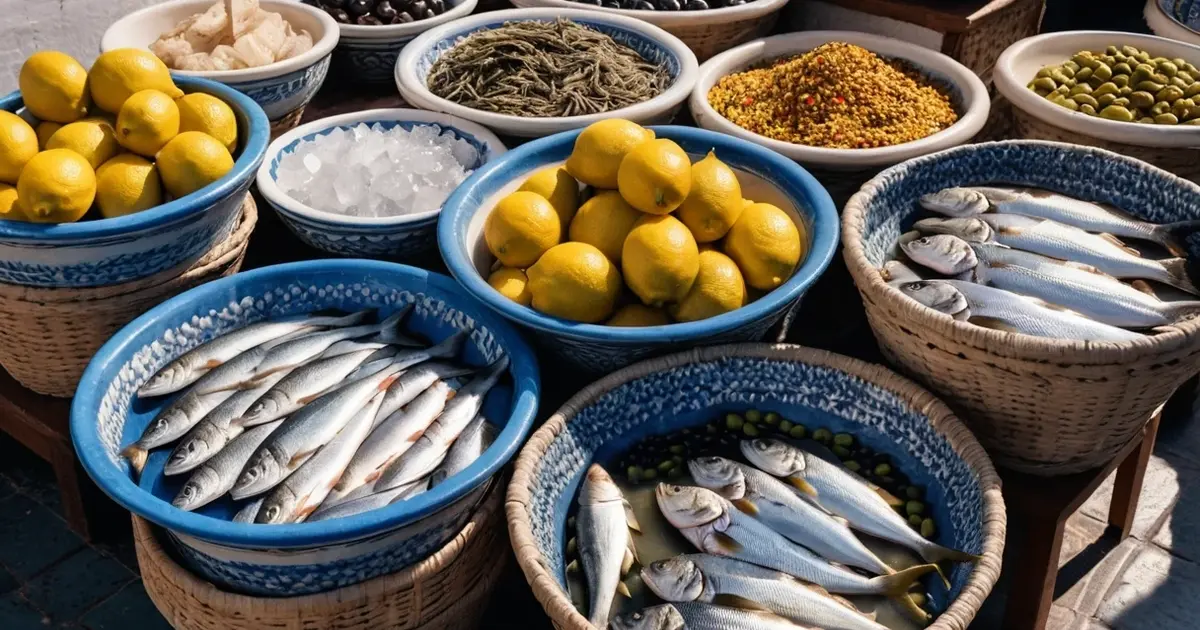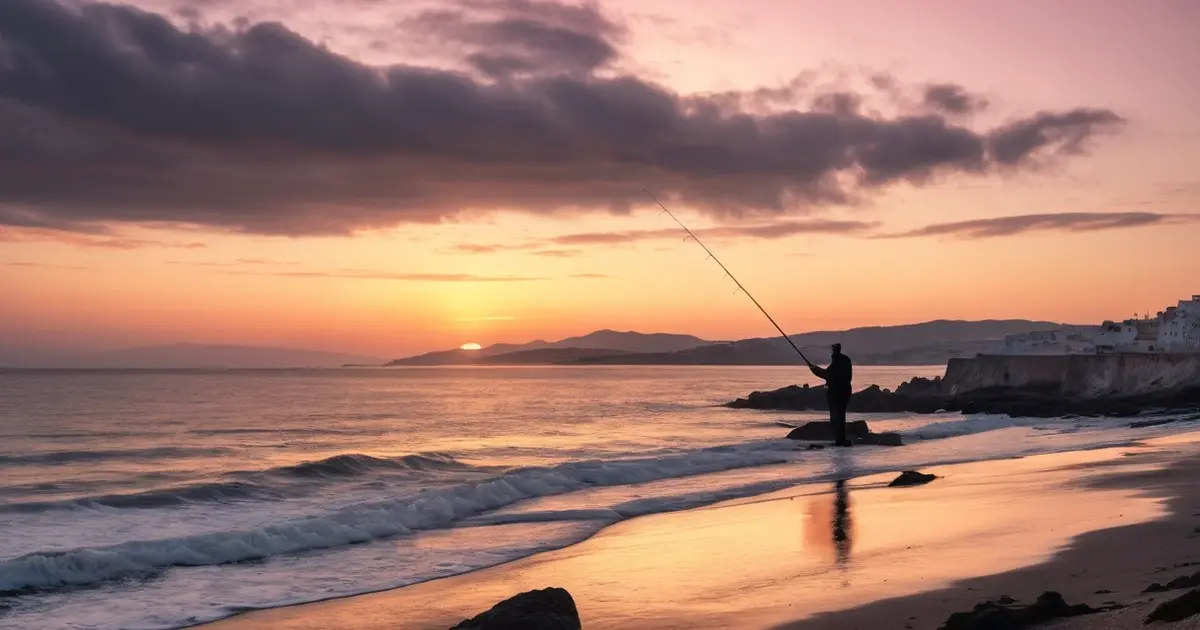The Mediterranean whispers secrets along Morocco’s northern coast. Here, where Africa nearly touches Europe, I discovered a different kind of travel experience—one that bridges continents while revealing the authentic soul of Morocco. Martil’s serene beaches and Tangier’s storied streets offer an immersive journey that few travelers truly explore.
Martil: The Azure Escape

Dawn breaks over Martil with gentle persistence. Unlike Morocco’s better-known coastal destinations, this small beach town awakens slowly. Local fishermen prepare their boats while the scent of mint tea and fresh bread drifts from nearby cafés. I’ve chosen to stay in a small guesthouse just steps from the shore, where my host Nadia greets me each morning with warm smiles and insider knowledge.
“Most tourists rush to Tangier and miss our paradise,” she tells me, pouring tea from an ornate silver pot. “But here, you experience the real Mediterranean rhythm.”
The beach stretches in a perfect crescent of golden sand, the water shifting between shades of turquoise and deep blue. Unlike the crowded shores of Europe just across the water, Martil’s beach offers space to breathe. Families gather under colorful umbrellas, children build elaborate sand castles, and the atmosphere remains distinctly Moroccan.
I spend my first day simply observing the gentle pulse of local life. An elderly man teaches his grandson to fish using traditional methods. Women walk along the shoreline, collecting specific shells I later learn are used in traditional Moroccan cooking. The Mediterranean here feels intimate, personal—a living entity rather than a tourist attraction.
The Coastal Road: A Journey Between Worlds

The coastal road connecting Martil to Tangier offers one of Morocco’s most spectacular drives. I rent a small car and set out early, windows down to catch the salt-tinged breeze. The route hugs dramatic cliffs where the Mediterranean crashes against ancient rock formations. Every curve reveals a new panorama—hidden coves, fishermen’s villages, and glimpses of Spain across the strait.
I stop at Cape Spartel, where the Mediterranean meets the Atlantic. Standing at this geographical crossroads feels symbolic—a place where continents, seas, and cultures converge. The lighthouse stands sentinel over waters that have carried Phoenicians, Romans, Arabs, and Europeans throughout history.
Nearby, the Caves of Hercules open like a portal to mythology. The cave’s famous sea-facing opening forms Africa’s silhouette—a natural window framing the endless horizon. A local guide explains how the caves were once believed to connect Africa to Europe underwater, a passage for gods and heroes.
“We live between worlds here,” he says, gesturing toward the distant Spanish coastline. “Our stories, our food, our music—everything carries influences from both shores.”
Tangier: Where Continents Converse

Tangier emerges from the coastline like a white mirage, climbing up hillsides in tiers of buildings that have witnessed centuries of cross-cultural exchange. Unlike Marrakech or Fez, Tangier doesn’t announce itself with grand monuments. Its magic lies in atmospheric streets and unexpected corners where history whispers.
I wander through the Kasbah, where narrow passages open suddenly to breathtaking views of the strait. The architecture tells stories of Moroccan traditions blended with Portuguese, British, and French influences. In the Petit Socco square, I sit at Café Central, once the haunt of writers like Paul Bowles and William Burroughs.
The café owner notices my interest in the vintage photographs lining the walls. “Tangier has always welcomed dreamers,” he explains, bringing me a glass of mint tea I didn’t order but somehow exactly wanted. “The city exists between reality and imagination.”
The Markets: A Feast for the Senses

Tangier’s markets offer an immersive experience unlike any other. In the Grand Socco, the scent of spices mingles with sea air. I follow my nose to a stall selling freshly caught fish, where the vendor explains which varieties are local specialties.
“This one,” he says, holding up a silver-scaled fish, “we prepare with preserved lemon and olives. It tastes like Tangier itself—salt, sun, and something you can’t quite name.”
The produce market reveals Morocco’s agricultural abundance—mountains of vibrant vegetables, fruits I’ve never seen before, and herbs whose names I struggle to pronounce. An elderly woman selling wild herbs notices my curiosity and offers me a sprig of something aromatic.
“For dreams,” she says simply, refusing payment with a gentle wave.
The Evening Light: Magic Hour

As afternoon fades, I return to the coastline where locals gather to watch the day end. Families spread blankets on Tangier’s city beach, young people play impromptu soccer matches, and fishermen prepare their evening catch.
The light turns golden, then pink, casting a magical glow over both the Moroccan landscape and the distant European shore. This daily spectacle feels like a reminder of nature’s constancy amid the ebb and flow of civilizations.
I find a quiet spot on the rocks and watch as lights begin to twinkle on the Spanish coast. So close, yet containing a world of difference. A local man setting up his fishing rod nearby notices my contemplation.
“You know what makes this place special?” he asks, gesturing toward the strait. “Not that we can see Europe, but that we can choose to look either way—toward Africa or Europe—and both views tell our story.”
The Return: Carrying the In-Between
On my final evening, I return to Martil as the sun sets. The beach has transformed into a community gathering space. Families share evening meals, musicians play traditional instruments, and the day’s heat gives way to perfect comfort.
I wade into the Mediterranean, feeling the gentle pull of currents that have connected civilizations for millennia. The water holds the memory of countless journeys between these shores.
This northern edge of Morocco offers something precious in our rushed world—a place to experience the richness that exists in the spaces between. Between continents, between cultures, between the expected and the discovered. Here, slow travel isn’t just a choice; it’s the only way to truly understand the conversation between shores that has shaped this magical coastline.
Address Book:
- Maison Bleue Guesthouse: Beachfront accommodation in Martil with home-cooked meals
- Café Hafa: Tangier’s terraced café with spectacular views of the strait
